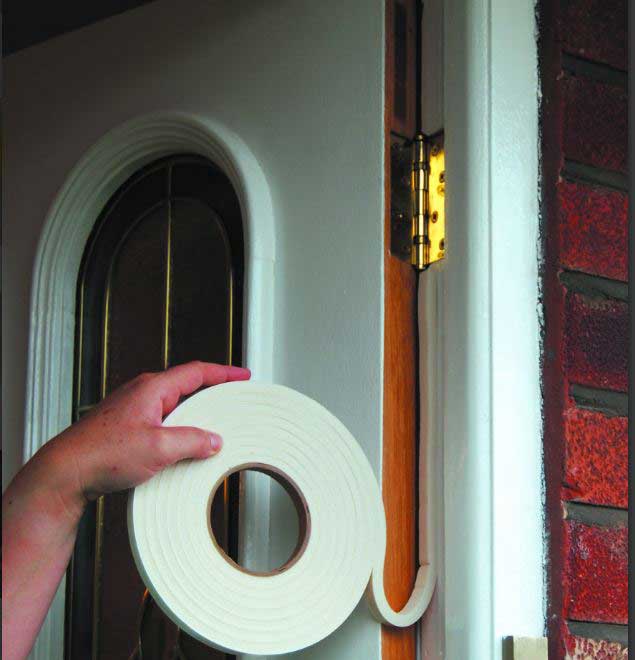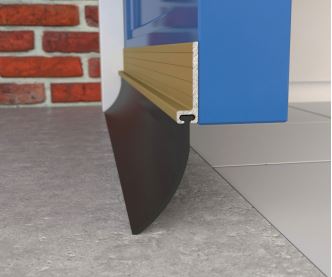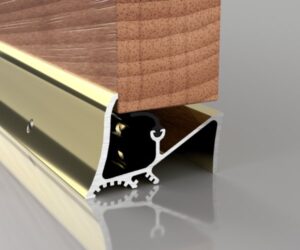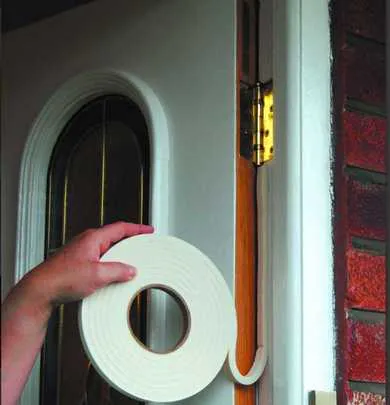As winter approaches, it is increasingly important to ensure your front door is weatherproof and able to withstand all weather conditions. By making sure you’re prepared, you can not only avoid unexpected costs and damage but also ensure your home remains warm and dry this winter.
Here at Door Superstore, we’ve put together a quick guide with six easy ways to weatherproof your front door before winter arrives.
If you have any questions about weatherproofing your front door or are unsure which product best suits your door, don’t hesitate to get in touch – call the team on 01752 422 501, or use the live chat in the bottom right-hand corner.
Table of contents
- Weatherstrips
- Caulk
- Draft excluders
- Letterbox draught excluders
- Door thresholds
- Update door hardware
- Why you should weatherproof your doors
1. Weatherstrips
One of the easiest and most common ways of weatherproofing your home and the front door is to add a weatherstrip around the opening of your door. A weatherstrip is a length of material that sits around movable components, such as doors and windows, to fill gaps and prevent air from entering the property, whilst still allowing the door or window to open and close.
Weatherstrips are generally super easy to install. They can be cut to size and are also often secured with a self-adhesive strip. Weatherstrips are generally manufactured from rubber and/or foam, but can also be purchased in silicone, felt and vinyl.
Install a weatherstrip along the bottom or even around the whole door frame to minimise heat loss, and draughts and even in some circumstances prevent water ingress.

2. Caulk
Caulk is another way of preventing draughts and heat loss from occurring, particularly in cooler winter months. Caulk is often applied at the time of installation of the door to prevent draughts and moisture from entering the property. However, caulk does tend to wear down and deteriorate over time.
Old and damaged caulk can easily be removed using tools that are as simple and easy as a flathead screwdriver or a knife. Once the old caulk has been removed, a new layer of caulk can be applied – caulk is often supplied in a tube with a nozzle which allows for precise application.
3. Draught excluders
Draught excluders are also available to minimise heat loss and prevent draughts from entering the home through gaps beneath the front door.
The most common form of draught excluder for your front door consists of a plastic or metal fixing plate, with thick bristles attached. The bristles allow the door to open and close effectively, but prevent draughts from entering the house. The bristles can also be cut down to size if they are longer than required to cover the gap between the door and the floor.

4. Letterbox draught excluders
As well as ensuring the gaps around the edges of your door are covered, it is important to remember that there are other aspects of the door that may allow draughts and moisture into the property.
In order to prevent heat loss and draughts via the letterbox, letterbox draught excluders are also available. The most common form of letterbox draught excluder consists of a metal plate that sits on the inside of a letterbox, with bristles that sit on both the top and bottom of the frame.
This creates an opening for letters to pass through, still blocking any draughts that would normally enter the home through the letterbox.
5. Door thresholds
Ensuring you have a durable and weathertight door threshold is another way of being prepared for inclement weather conditions. Door thresholds help to ensure no water runs into the property from outside, helping to divert any rainwater that runs down the front of the door away from the entry point.
6. Update door hardware
Another way of making sure that your front door is weatherproof and ready for the winter is to ensure that all pieces of door hardware are in good condition and fitted tightly. If doorknobs, latches, hinges or locksets are broken or not fitted correctly, the door may be loose and draughts will be able to pass through.
So, it is important to check that your door is hung correctly so that no gaps are widening on either side of the door. You must also check that there are no loose screws, damaged connections or broken doorknobs.
If there are any loose screws, loose doorknobs, locks, damaged hardware or warped hinges, ensure they are tightened and replaced to create a door that sits tightly within the door frame to minimise heat loss.

Why you should weatherproof your doors
Weatherproofing your front door is essential for several reasons.
Firstly, it helps to maintain the structural integrity of your home by preventing moisture from seeping in, which can lead to rotting, warping and mould growth over time.
Secondly, it enhances energy efficiency by sealing any gaps or cracks that may allow air to escape or enter, reducing heating and cooling costs.
Additionally, weatherproofing improves overall comfort by minimising drafts and noise intrusion, creating a more pleasant living environment.
Key takeaway:
When you weatherproof your door, not only will you protect your home but also save money on maintenance and utility bills in the long run.
It’s a win on all fronts!













